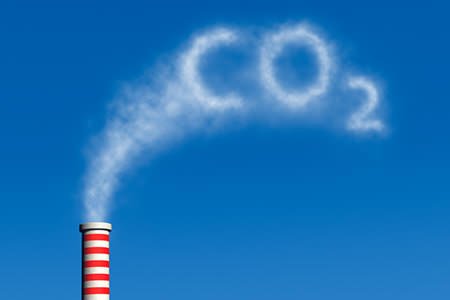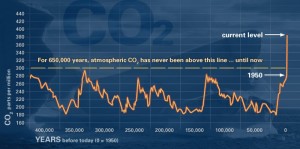Sitting out on my deck with an old buddy on a hot August evening this year, enveloped by smoke from forest fires, the conversation quite naturally turned to climate change. Then I heard something I hadn’t heard before about carbon in the atmosphere and it quite astounded me.
Carbon in the atmosphere has risen about 80% in the last 50 years. That is a fact. Also a fact is the proven science that CO2 allows solar heat wavelengths (short) into the atmosphere but doesn’t let the thermal heat wavelengths (long) out to cool the earth. It traps the heat like a greenhouse does…..and they can get pretty hot. It’s good science and not to be ignored.
My buddy Terry is an old university friend. We shared an apartment together in our last year at the U of M in Winnipeg, shared lots of conversations and laughs…..and I was his Best Man at his wedding a year later. Today he is an Agricultural consultant. One of the things he does is test Alberta farmers’ soil and devise a proper fertilizer/nutrient formula for it. This is where it gets interesting. Terry tells me that they have had to adjust their formulae for the soil because of atmospheric changes. Now that there is more CO2 in the air, plants are more robust all by themselves. Then my mind started to grind. What about native plants? Are they more robust? Is there more ungulate wildlife due to that? What about third world countries who don’t fertilize much, are their yields higher due to more carbon? Is there more food in the world due to carbon emissions? The answer to all these questions is apparently “Yes”.
About three years ago I was researching how to utilize the energy from the ground to extend the season for a greenhouse in our climate and I called the director of the Tomato Growers’ Association near Vancouver. I was asking how they operated in the winter and after he told me about how they heat their greenhouses, he said that since they closed up the greenhouses to trap the heat, the tomatoes used up all the carbon to the extent that it hurt the yield. They actually had to pump CO2 into the greenhouse to maintain normal tomato yields.
The fact that the population of the world has only recently been growing by about 1 billion every 12 years indicates that life is teeming on the planet. We tend to focus on one aspect of the effect our living here and once it gets set into a paradigm…..or conventional wisdom…..it becomes difficult and unacceptable to consider other aspects of the matter. The truth is, the planet is significantly self regulated. That doesn’t mean that humans can be irresponsible in upsetting the self regulating process but we must understand the balance.
Anyway Terry, you have once again surprised me with your scientific knowledge grounded in practical experience!


[…] Source: The Other Side of Carbon […]
Very interesting, Bruce. As you may already know, CO2 is emitted by plants at night. The sun of course creates photosynthesis during the day, with leaves giving off oxygen and producing sugars during the day (hence the sweetness of the air on a warm rainforest or tropical day). But at night, the reverse kicks in with CO2 as the main byproduct given off by plants. I’ve heard of people who have had to cut back on the number of plants in their home because of oxygen deficiency at night. So the balance is present to sustain life, and we are seriously messing with it. How far can it go before this same balance is so seriously skewed as to put us all at risk on that front also?
A couple of things. One is that plants absorb considerably more CO2 than they respirate out. So overall in a 24 hour period, a house is richer in O2 with plants although the pattern does change at night. That may be the reason subconsciously why some people prefer to sleep at night with the window open.
Another interesting thing that the Smithsonian wrote an article on is that as CO2 in the atmosphere rises, plants absorb more, it closes up holes in the plants, the plants then use less water and nitrogen. I think this is the science that causes Terry to reformulate the fertilizers because the amount of nitrogen needed is lower. Regardless, plants are more robust when there is more CO2 in the air apparently and the BC Tomato Growers actually pump it into the greenhouses.